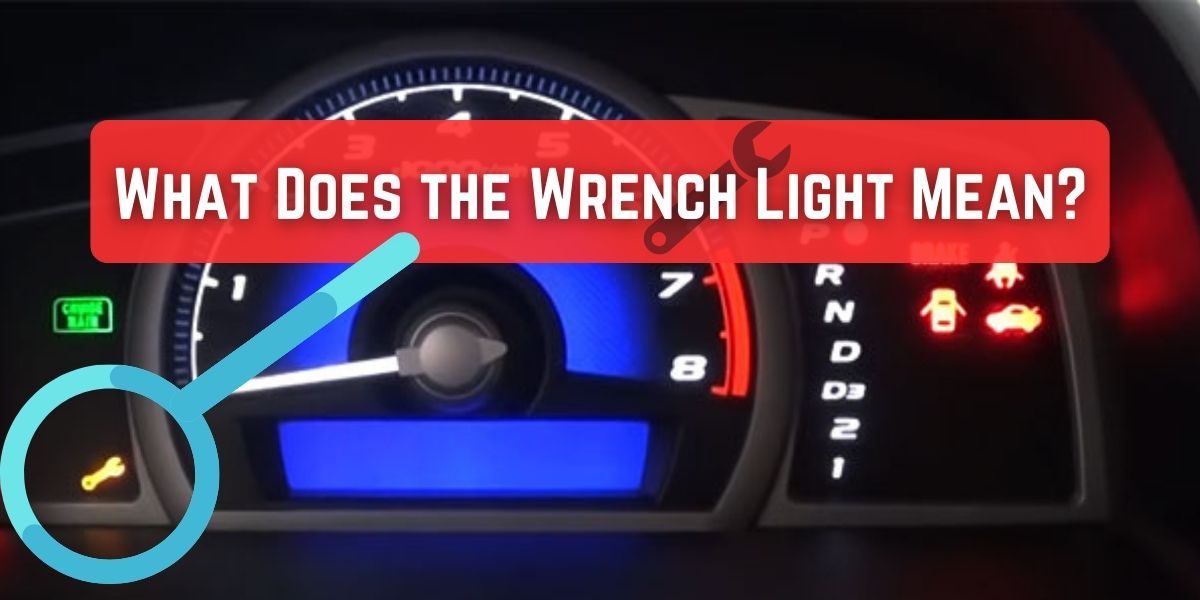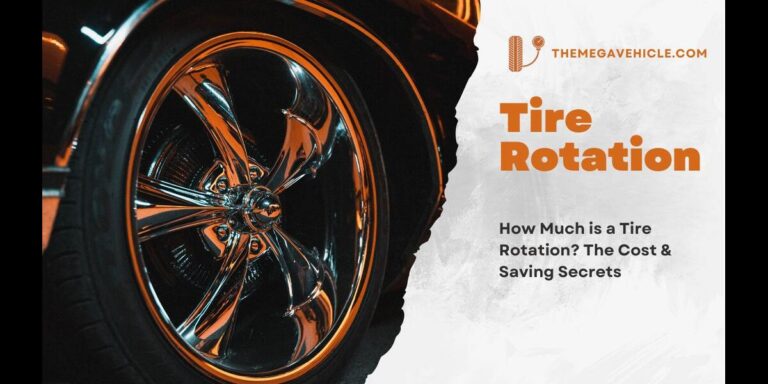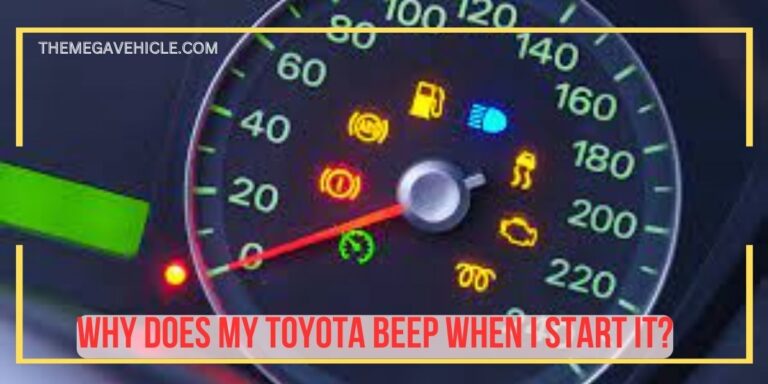What Does the Wrench Light Mean?

Ever glanced at your car’s dashboard and spotted a curious symbol resembling a wrench? You’re not alone. This seemingly innocuous icon, often illuminated in yellow or orange, has sparked countless questions from drivers: “What does the wrench light mean?” While its appearance may trigger mild panic, understanding its purpose can empower you to care for your vehicle and ensure smooth rides ahead.
I. What is the Wrench Light?
The wrench light, sometimes accompanied by the phrase “Service Required” or “Maintenance Due,” serves as a universal indicator across various car brands. Unlike the more ominous engine check light, which signifies potential internal issues, the wrench light focuses on scheduled maintenance. Imagine it as a friendly reminder, tapping your shoulder and saying, “Hey, your car needs some TLC!”
Think of the wrench light as a countdown timer for your vehicle’s well-being. Its illumination usually coincides with specific mileage milestones or time intervals outlined in your car’s manual. It’s like a personal trainer for your car, prompting you to schedule essential tune-ups, oil changes, and filter replacements to keep everything running smoothly.
Unlike the engine check light, which demands immediate attention due to potential malfunction, the wrench light allows for some flexibility. However, ignoring it for too long can be detrimental. Just like neglecting your own health checkups, delaying recommended maintenance can lead to premature wear and tear, reduced fuel efficiency, and even costly repairs down the line.
So, the next time you see the wrench light illuminated, don’t panic! Simply consult your car’s manual or refer to the manufacturer’s online resources to determine the specific service your vehicle requires. With prompt attention and a bit of TLC, you can keep your car happy and humming along for many miles to come.
II. Two Main Meanings: Scheduled Maintenance or Potential Trouble
That illuminated wrench isn’t just a decorative dashboard ornament – it’s a communicator, holding the key to understanding your car’s needs. But its message can be two-fold, demanding either proactive care or prompt attention. Let’s decipher its language:
1. Scheduled Maintenance
Think of the wrench as a friendly personal trainer, reminding you it’s time for your car’s workout routine – essential tune-ups, oil changes, and filter replacements like . These vital services keep your engine purring and wheels turning smoothly, just like your trainer ensuring your body stays in tip-top shape.
The wrench usually illuminates based on mileage milestones or time intervals laid out in your car’s manual. It’s like a countdown timer, ticking away until your vehicle needs its scheduled service. Ignoring it for too long is like skipping your workouts – while you might get away with it for a while, eventually, performance dips and problems arise.
But don’t fret! Once you complete your car’s scheduled maintenance, you can often reset the wrench light yourself. Consult your manual or online resources for specific instructions – it’s usually a simple button press or combination. Think of it as hitting the “workout complete” button, letting your car know it’s back in peak condition.
2. Potential Trouble: When the Wrench Signals SOS
While the scheduled maintenance message is friendly encouragement, the wrench light can also flash its warning signals. If it appears alongside other dashboard lights, like the engine check light, or if it blinks or changes color, it could be a sign of deeper trouble. Imagine your personal trainer suddenly stopping your workout and pointing out an injured muscle – it’s time to see a doctor.
These scenarios often indicate potential issues with your engine, emissions systems, or other vital components. Don’t ignore this SOS call! Ignoring these warnings can lead to more significant problems and costly repairs down the road. Just like you wouldn’t push through a workout with an injury, it’s crucial to seek professional diagnosis and address any underlying issues with your car.
Remember, a timely visit to a mechanic can nip problems in the bud, saving you money and heartache in the long run. Think of it as an investment in your car’s health and your own peace of mind, ensuring you can cruise confidently with the wrench light acting as a reassuring thumbs-up, not a flashing alarm.
By understanding the two faces of the wrench light, you can become a proactive car owner, ensuring your vehicle receives both the routine care it needs and the prompt attention it deserves. Remember, listening to your car’s language is key to keeping it happy and the roads worry-free – now go forth and conquer the mysteries of the wrench, confident in your ability to decipher its messages!
Also Read: P0106 Code: Causes, Symptoms, And Solutions
III. Decoding the Light’s Message: What to Do When You See It
The wrench light has spoken, but what should you do now? Fear not, intrepid driver, for this guide will equip you with the tools to navigate both scheduled maintenance and potential trouble.
1. Scheduled Maintenance: Time for a Tune-Up!
Seeing the wrench light alone doesn’t automatically spell doom and gloom. More often than not, it’s a friendly reminder that your car is due for its scheduled service, similar to how your doctor’s appointment notification pops up on your phone.
Step 1: Consult the Manual
Your car’s manual is your maintenance bible. Grab it and flip to the section on recommended service intervals. These intervals are typically based on mileage or time, and may vary depending on your specific car model.
Step 2: Schedule an Appointment
Once you know the recommended service interval, it’s time to book an appointment with your trusted mechanic or dealership. They’ll handle all the tune-up tasks, from oil changes and filter replacements to checking vital fluids and ensuring everything runs smoothly.
Pro Tip: Experienced DIY car enthusiasts can tackle some routine maintenance themselves, like changing the oil or air filters. However, if you’re unsure or have complex tasks, it’s always best to leave it to the professionals.
2. Potential Trouble: Don’t Ignore the Wrench’s SOS!
Now, let’s address the scenarios where the wrench light isn’t just a friendly reminder but a flashing warning sign. If it appears alongside other dashboard lights, changes color, or blinks, it could indicate potential trouble brewing under the hood.
Step 1: Don’t Ignore the Light!
The worst thing you can do is ignore the wrench light’s SOS call. Driving with potential issues can lead to further damage and costly repairs down the line. Remember, it’s like ignoring a persistent cough – it might not disappear on its own, and could even worsen.
Step 2: Seek Professional Help
Consult a qualified mechanic or dealership for proper diagnostics. They’ll use specialized tools like to identify the source of the problem, whether it’s a sensor malfunction, a failing component, or something else entirely.
Step 3: Follow the Diagnosis
Based on the diagnosis, the mechanic will recommend the appropriate course of action. This might involve repairs, further checks, or simply resetting the light if it was a false alarm. Remember, prompt attention can often nip problems in the bud before they blossom into bigger headaches.
By following these steps and understanding the two faces of the wrench light, you can become a proactive car owner, ensuring your vehicle receives both the routine care it needs and the timely attention it deserves. Remember, a healthy car equals a happy driver and a smoother journey on the road. Now go forth, decode the wrench’s messages, and conquer your automotive adventures with confidence!
Also Read: P0340 Code: Symptoms, Causes, And Repair Guide For Your Car
IV. Beyond the Wrench: Decoding the Dashboard Language
While the wrench light acts as a helpful guide for your car’s maintenance needs, it’s not the only symbol illuminating your dashboard. Let’s explore other common warning lights and what they mean, empowering you to understand your vehicle’s language and ensure safe, smooth sailing on the road.
1. Engine Check Light: The Red Alert
Unlike the friendly nudge of the wrench light, the engine check light (often resembling an engine with an exclamation mark) demands immediate attention. It signals a potential malfunction within your car’s engine, emissions system, or other vital components. Ignoring it can lead to serious engine damage and costly repairs down the line.
Think of the engine check light like a flashing fire alarm in your car. Don’t delay! Pull over safely and either contact a roadside assistance service or head straight to a trusted mechanic. They’ll utilize diagnostic tools to identify the issue and recommend the necessary repairs.
2. Tire Pressure Warning Light: Feeling Flat?
This icon, often depicting a tire with an exclamation mark, signifies a potential drop in tire pressure. While it might not seem as urgent as the engine check light, ignoring it can compromise your safety and vehicle performance. Underinflated tires affect handling, increase fuel consumption, and risk sudden blowouts.
Don’t wait for a flat tire to slow you down! Stop at a gas station or tire shop to check your tire pressure and inflate them to the recommended levels indicated on your car’s door jamb or manual.
3. Battery Warning Light: Feeling Drained?
This illuminated battery symbol reminds you of your car’s most essential power source. If you see it, it could indicate a weak battery, alternator malfunction, or loose connections. While not always an immediate emergency, it’s best not to let your battery completely die out on the road.
If you notice the battery light while driving, try to reach a safe location like a gas station or dealership. A mechanic can diagnose the problem and recommend solutions, whether it’s a simple jumpstart, battery replacement, or alternator repair.
Remember, understanding the language of your dashboard lights is crucial for maintaining your car’s health and ensuring your safety on the road. By heeding the messages of the wrench, engine check, tire pressure, and battery lights, you can become a proactive driver, confident in navigating your automotive adventures with a well-informed smile.
Conclusion: Be the Master of Your Mechanic’s Workshop
So, the next time you see that enigmatic wrench light illuminating your dashboard, remember – it’s not a harbinger of doom, but a friendly reminder from your car. It’s a tap on the shoulder, a nudge to keep your vehicle in tip-top shape. By understanding its meaning – whether it’s a scheduled maintenance check-up or a potential trouble signal – you’re empowered to become a proactive car owner.
Regular maintenance, as the wrench light reminds us, isn’t just about keeping your car purring smoothly; it’s about safety and longevity. Just like your body needs regular check-ups to stay healthy, your car thrives on routine tune-ups, oil changes, and filter replacements. Heeding the wrench’s call isn’t just a chore, it’s an investment in preventing costly breakdowns and ensuring your car stays your reliable companion on the road.
But the wrench isn’t the only voice on your dashboard. The engine check light, tire pressure warning, and battery symbol all play crucial roles in keeping you informed and safe. By learning their language, you’re equipped to address potential issues promptly, evitando a scenario where your car becomes the conductor of a roadside orchestra of tow trucks and repair bills.
Remember, knowledge is power, and understanding your car’s language empowers you to be the master of your own mechanic’s workshop. With regular maintenance, prompt attention to warning lights, and a little automotive know-how, you can cruise confidently, knowing your car is a well-oiled machine ready for countless adventures. So, embrace the wrench light, decipher the other dashboard whispers, and enjoy the freedom of the open road, knowing you and your car are in perfect harmony.






